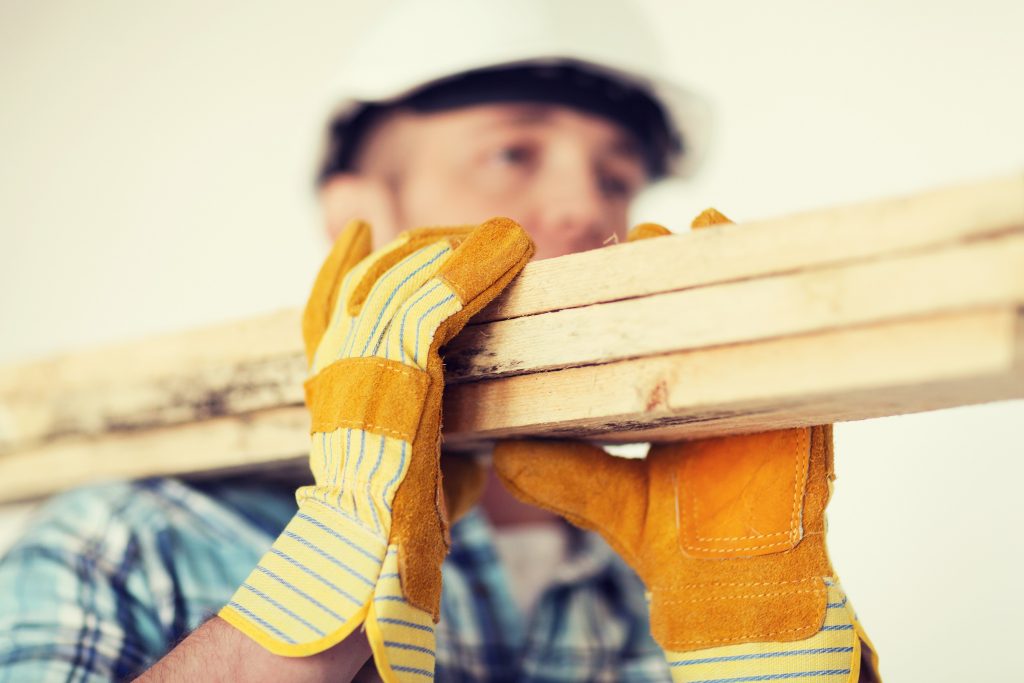Finding The Best Work Gloves For Safety

You may not care about small constant cuts, bruises, or burns to your hands from work. But we do! It’s a safety violation – and it’s definitely an unnecessary risk. In some industries, work gloves are a standard and mandatory part of employees’ personal protective equipment (PPE).
When you need gloves for work, you can’t just grab any pair. There are factors to consider depending on your needs, especially if you work around safety hazards and want to make sure to protect your hands.
What to Look For in Safety Work Gloves
The best work gloves aren’t always the most expensive pair. Sometimes a lower-priced pair can be more effective at protecting your hands. It all comes down to your specific occupation and how the gloves are constructed. Here are a few factors to consider when you’re shopping for a pair of work gloves:
- Safety Work Gloves For Power Tools: Puncture-Resistance
If you work with power tools, you want a pair of work gloves that will protect your hands from punctures and cuts. Leather gloves are sturdy, puncture-resistant, and ideal for landscapers, metal workers, and carpenters.Padding on the fingers, reinforced palms, and knuckle guards provide added protection. High quality roofing work gloves are often constructed from leather due to its durability and protective qualities.
- Safety Work Gloves For Heavy Tools and Machinery: Protection from Blisters and Bruises
Construction work and other jobs that require the use of heavy tools can leave hands bruised and blistered. You need work gloves with heavy padding to protect your hands from power tool vibrations and to absorb shock. Padding will also protect from blistering due to repetitive motion. - Safety Work Gloves For Hazardous & Liquid Materials: Chemical and Water Protection
If you are working around chemicals, your hands MUST be protected. This is an easy one: even if the chemicals don’t burn you right away, they can be transferred onto another part of your body, and can make their way into the bloodstream through your skin. Gloves are also essential for jobs where one’s hands are constantly coming into contact with or being submerged in water – to keep hands from getting water-logged, and to be able to maintain grip on things whenever necessary. Liquid-resistant gloves are often rubber coated or constructed from a synthetic waterproof material.If complete protection isn’t a necessity on the job site, there are inexpensive safety gloves that are coated to help wick away moisture instead of absorbing it. Construction workers can also find liquid-resistant gloves specifically designed for handling tar, mortar, and concrete – from all of which you want to protect your hands!
- Safety Work Gloves For Extreme Temperatures: Cold and Heat Resistance
Welding and metalworking require extreme heat and your hands need to be protected. This is also true if you are working in colder temperatures.Heat-resistant gloves are durable and constructed from a fire-resistant material. Some are also coated with a fire retardant for added protection. If you work in very cold to subzero temperatures, look for insulation with the level of protection that matches up with the temperatures you regularly come into contact with. These will protect your hands from frostbite while allowing you to get a grip on objects.
- Safety Gloves For Electricity: Shock Protection
Good working gloves for electricians are crucial for employee safety and required by OSHA. Safety gloves must be constructed from a non-conductive material like leather or rubber. You also want to make sure that the gloves do not come with any metal parts. This would violate safety protocols, creating unnecessary risk of electrocution. Electrical gloves must meet many specific safety standards, and should be classed according to the voltage with which you are working. Be sure you are well versed in these standards and that your gloves comply.
Safety Gloves: Make Sure They Fit… Like A Glove
Even the best work gloves can be ineffective at providing protection if the fit isn’t right. Gloves that are too small leave areas exposed to hazards and can also limit movement, or reduce blood supply to the wrists or fingers. This can be another hazard if an employee can’t properly move their fingers and hands.
Gloves that are too big can shift and let chemicals and other liquids leak in. They won’t be effective in cold or hot temperatures. And, they can create unnecessary risks when there is too much extra fabric at the ends of the fingertips, making it difficult to grasp objects, or easy to get caught.
To find a pair of work safety gloves that fit perfectly, you might have to try on a few pairs.
Shopping online and can’t try them on first? Order different sizes at the same time and return the pair that doesn’t fit perfectly so you can start wearing them to work right away. Make sure the store you’re purchasing from allows this in their return policy. You can also narrow down the size choices by measuring the length and width of your hands, following the size guide in the product description – or this safety glove size chart.
Get A Grip On Safety With Work-Fit
There’s no denying that work gloves are crucial to employee safety in certain jobs. Not only does a worker need to wear gloves, but they must also ensure that they provide the right kind of protection for their needs and fit properly.
As part of your company’s safety practices, all employees should always be wearing the proper pair when working.
Still have questions about finding the right work gloves, or any other employee safety standards? Ask away! We’re always happy to chat about safety – and the many other workplace injury prevention and wellness services we offer.



